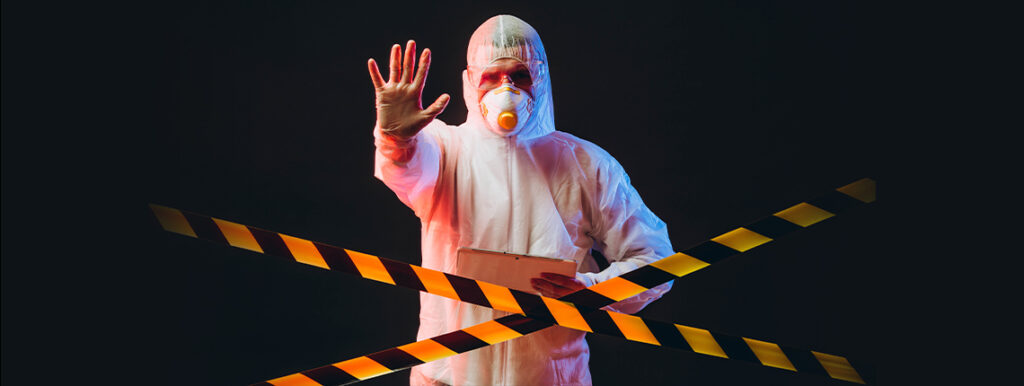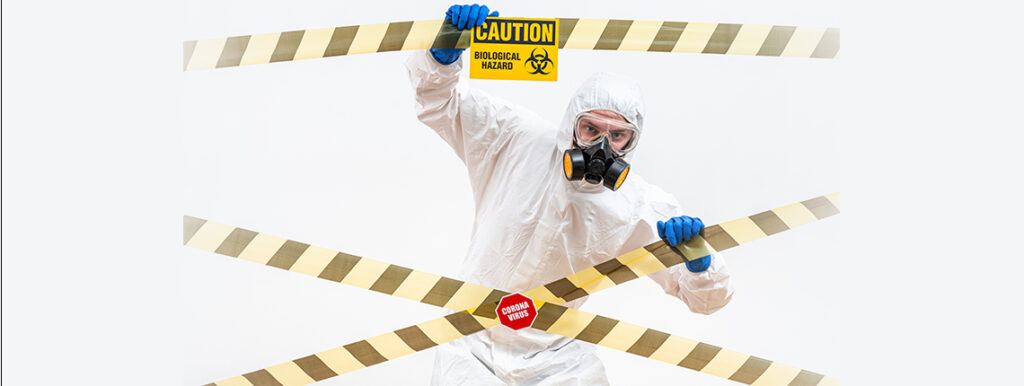1-UNDERSTANDING WHAT CONSITUTES A BIOHAZARD

The CDC defines a biohazard as one of those infectious agents that present a risk or potential risk to humans, animals, or the environment.
These hazards can include blood, bodily fluids, tissue, bacteria, fungi, viruses, sharps, human and animal feces and urine, as well as OPIM.
OPIM or “other potentially infectious materials” as defined in
OSHA Bloodborne Pathogens standard (29CFR 1910.1030(b) includes
human semen, vaginal secretions, spinal fluid, synovial fluid, pleural fluid, pericardial fluid, amniotic fluid (from childbirth), saliva in dental procedures or any body fluid that is visibly contaminated with blood and all body fluids where it is impossible or difficult to differentiate between fluids; tissues or organs that have been infected with a biological pathogen.
There are 4 types of biohazards, also termed as biological hazards:
Type 1: Biological agents: These include bacteria, molds and yeasts, parasites and viruses, including Covid 19 and flu viruses. These are usually harmless, while some, like Covid 19 and flu viruses can cause serious risks.
Type 2: Biotoxins: These are poisonous and toxic to humans and are produced by plants, bacteria, insects and certain animals. They can cause inflammatory reactions to the body. These can include ricin, tetanus, staph and botulism.
Type 3: Blood and Blood Products: Although blood itself may not be considered a biological hazard, it can still be a risk if contaminated with
diseases like Hep A, B and C and HIV. Unless properly handled, these diseases can be transferred to humans.
Type 4: Environmental : This generally refers to plants, soil or water that may be contaminated by soil or water runoff that is contaminated with harmful diseases such as cholera .
As you can see, there are many biohazards that can occur in our daily lives, such as molds, bacteria, viruses ( such as Covid19 and the flu). Most of the time, our exposure is usually harmless. However, molds and fungi can cause asthma and other respiratory diseases. Covid 19 and the flu cause other symptoms that can impact our health and daily lives.
However, it is not usual to be exposed to blood and blood products
On a daily basis unless you work in a laboratory, hospital or healthcare setting, it is imperative that you have a trained, certified biohazardous remediation company, such as CleanScene BioRecovery Services handle any biohazardous situation that you may encounter. We are trained and certified by the American BioRecovery Association , which is a world wide certifying agency that maintains a strict standard of ethics and training . We handle crime/trauma scenes, suicides, unattended deaths, sanitizing, disinfecting, surface mold treatment, hoarder houses and biohazardous medical waste.
You can be assured that CleanScene Biorecovery Services and all of their employees are already trained in all of the above procedures, you, as the customer, can simply rely on us to perform the necessary services needed with full confidence that they will be done professionally, expediently, and cost effectively.




